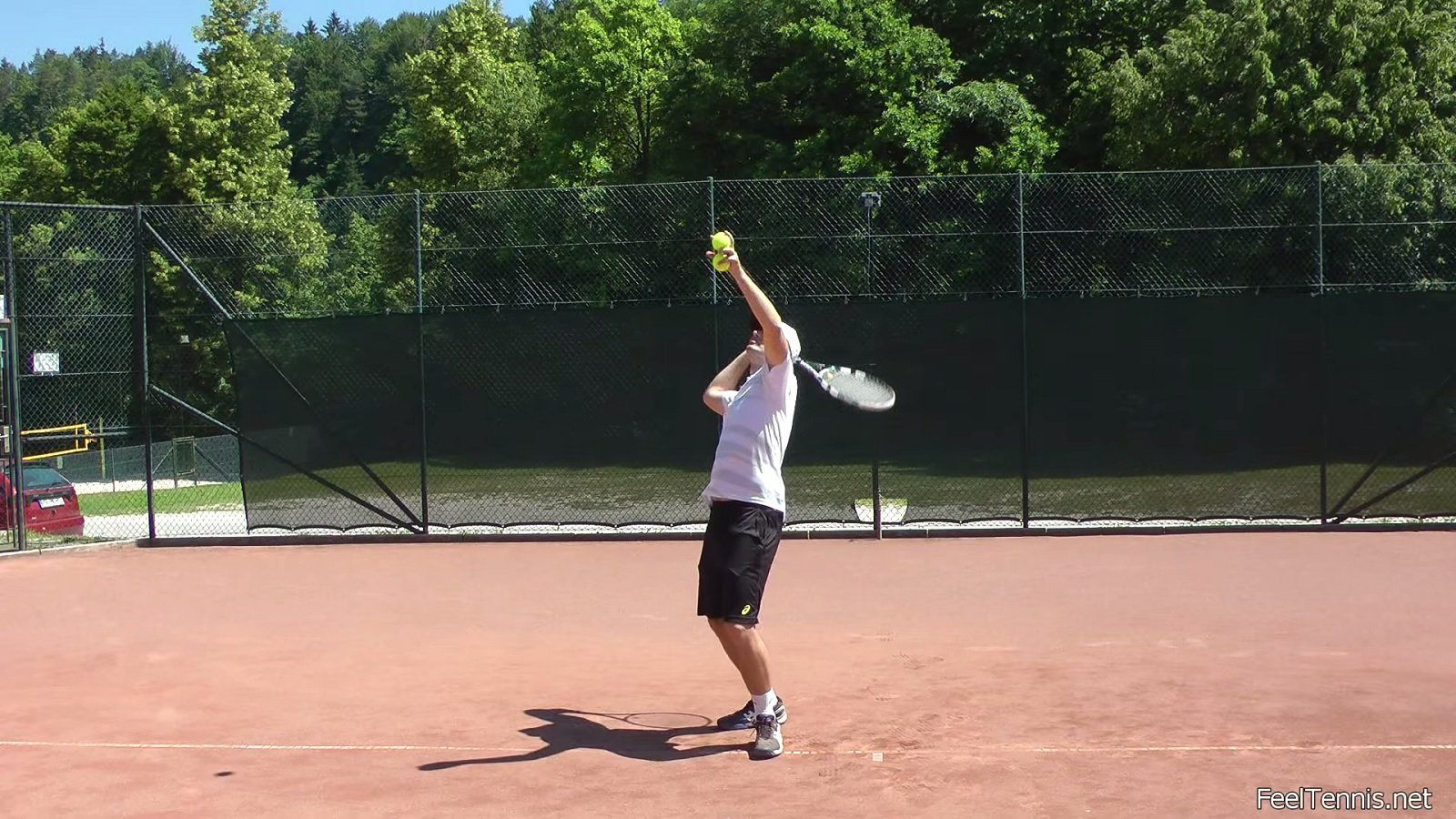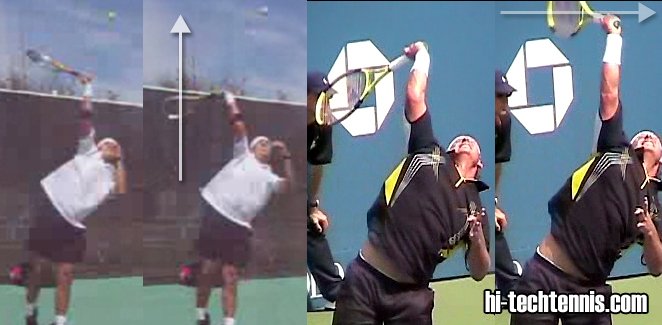Just searched and looked up everything.
Is this image correct?
The key is to drop the left shoulder (for rightie) and raise the right shoulder so there's almost a straight line instead of a sharp angle from shoulder to shoulder to the racket?
I have no medical training.
This issue involves the upper arm bone, humerus, and the shoulder joint and tissues that get impinged. The shoulder joint is on the scapula and the scapula moves around and tilts on the body.
There are various complications, such as the scapula moving around, that are discussed in this long thread. There are exceptions to the simple recommendations. You should also search on your own.
What do you think about the degree of shoulder abduction in the Wawrinka and Murray serves?

tt.tennis-warehouse.com
D. Whiteside, later in the thread, discusses estimating the angle. He is a biomechanics researcher and his view is very creditable. Ellenbecker's view is very creditable. They have studied the risks to the shoulder from the tennis serve. Ellenbecker has a video, "Rotator Cuff Injury," that is no longer available free, but is on Tennis Resources website, join for 3 months and see their videos.
You have the right idea but you need to learn to estimate for yourself. The chest can be oriented in 3D and that affects the apparent angle seen by cameras placed around the server. I would select ATP servers for that angle estimate. Note that even Federer's upper arm is high, not perfect, neither is top server Karolina Pliskova. They are discussed in the thread. Read my 'Background' post at the end.
You should be able to estimate when the arm is too high, be aware of it, and limit it based on Ellenbecker's recommendation. Use ATP servers and look at various camera angles. Pick a camera angle from behind to see near impact. But the upper arm angle should be somewhat maintained during more/most of the service motion. See clear high speed videos.
Recently, I became aware of another video that describes a shoulder impingement at a specific shoulder configuration for baseball pitchers and overhead athletes, I believe, including tennis servers. You should be aware of that injury also, the injury occurs well before impact.
See also, sub-acromial impingement.
I draw or imagine a line between the two shoulder joints and extend it toward the upper arm. I draw or imagine the line of the upper arm estimate the angle formed. I use a protractor or estimate the angle and am aware of the inaccuracies when making measurements in a 2D image of objects in 3D space. If that angle is more than about 15-20 degrees I warn the posters that they should check if the angle is OK.
I found flaws in simply measuring up from the server's side and don't use that.
The angle I prefer uses the same lines as Whiteside's method, except my angle is the complement, a smaller angle. He gets 179 d. and I get 180-179 = 1 d. I prefer this smaller angle because I can estimate small angles better than large angles. For example, Federer's upper arm is often about 30 degrees up from the shoulder's line extended vs upper arm 150 degrees from the line between the two shoulders. We have a better feel for the smaller angles.
Besides all this, due to individual bone structure, shoulders vary regarding impingement risks for extreme motions such as baseball pitching and tennis serving.
If you look for a while, you will see that some servers' upper arms look too high.
You should also see similar upper arm orientations for baseball pitchers.
Google:
baseball pitcher pictures






